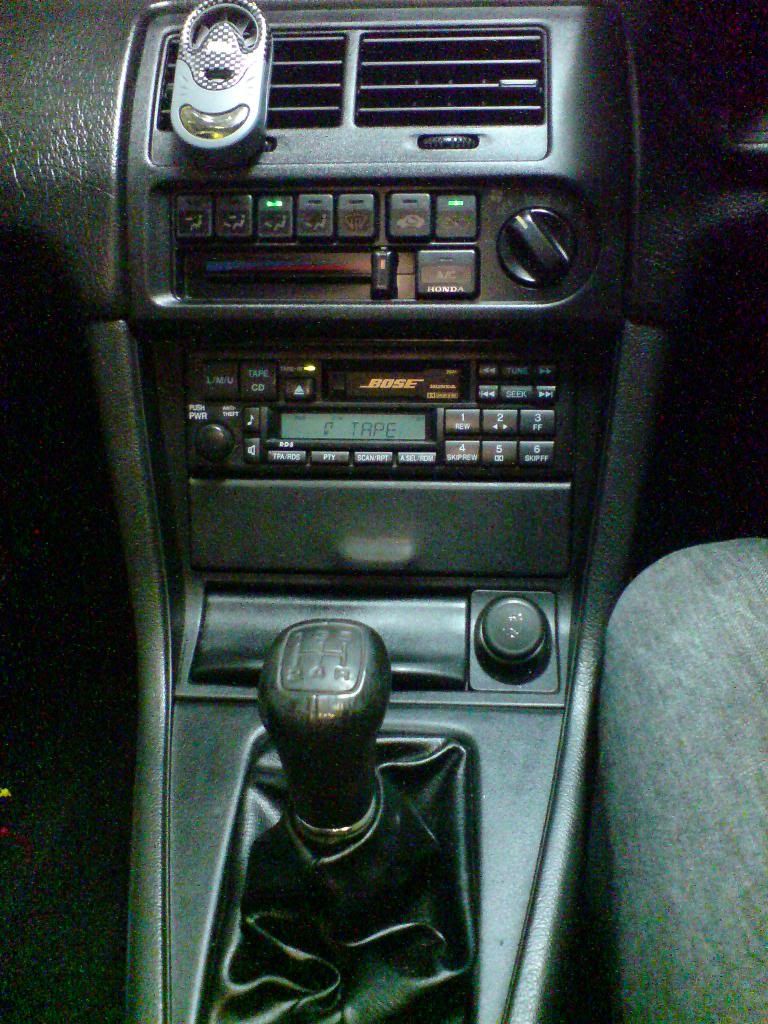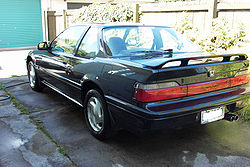
On April 9, 1987, the third-generation Prelude was released in the Japanese domestic market and released later that year worldwide, being an 1988 model in North America. Featuring evolutionary styling from its predecessor, it shared design cues from the Honda NSX that would be introduced later in 1989. The Prelude featured innovative features for its time such as a 0.34 drag coefficient, roof pillars made of high-strength metal and its signature feature, the available option of the world's first mechanical four wheel steering system available in a mass-production passenger car.
The third-generation Prelude was exclusively powered by variants of the Honda B20A engine, a base carbureted version with a SOHC 12-valve valvetrain, or a DOHC variant with Honda's PGM-FI fuel injection and 16 valves.
| Third-generation Honda Prelude engines: B20A/B20A1 - 2.0L DOHC PGM-FI 143/160 hp (Japan/Europe) B20A3 - 2.0L SOHC 12v carb(12v) 104 hp North America B20A4 - 2.0L SOHC 12v carb Global, except North America B20A5 - 2.0L DOHC PGM-FI 135 hp (101 kW) North America B20A6 - 2.0L DOHC PGM-FI 142 hp (106 kW) Oceania B20A7 - 2.0L DOHC PGM-FI 150 hp (110 kW) Europe B20A8 - 2.0L DOHC PGM-FI 133 hp (99 kW) Europe B20A9 - 2.0L DOHC PGM-FI 140 hp (100 kW) Europe B21A - 2.1L DOHC PGM-FI 145 hp (108 kW) Japan (SI States) B21A1 - 2.1L DOHC PGM-FI 140 hp (100 kW) North America |
The Prelude was Wheels magazine's Car of the Year for 1987.
The facelifted third-generation Prelude was revealed in Japan on November 21, 1989. Along with the facelift, a new Prelude model was introduced to the Japanese domestic market, the Prelude INX, which featured fixed headlights and a front fascia very similar to the contemporary Honda Legend coupé. The facelift coincided with changes to North American lighting requirements in the United States and Canada, and a greater focus on safety was offered with available anti-lock brakes and an available driver's side airbag exclusively offered on Japanese models.
The front bumper on the 1990 Prelude was also changed to feature clear indicators and a revised parking lamp design. Many of the interior parts were revised, including the dash bezel, the door handle and window switches. In North America, the Si engine grew from 2.0 to 2.1 liters when the B21A1 engine became standard, which offered 4WS or ABS (called ALB). The Japanese version of the Si with the B20A was rated 140 HP with the JDM engine and was rated for 37 MPG. The B21A1 engine bored to 83 mm (3.3 in) with a total displacement of 2056 cc producing up to 140 hp (104 kW). This version featured a unique cylinder liner featuring FRM (fiber reinforced metal) that is reported to be extremely tough. This causes premature piston ring wear contributing to exceptionally high oil consumption.

Honda released the Prelude SiStates in 1990. Originally available only in Japan, this car was a limited production run and very few were built. It featured four-wheel steering, ABS, limited slip differential, a leather-wrapped steering wheel and gear lever, extra sound deadening on the firewall and hood, rear windscreen wiper and washer, and many more features that were usually options. It also featured a unique B21A engine rated at 145 bhp (108 kW) that was only produced for the SiStates. A major distinction of the SiStates is that it was the same width as the Prelude sold in North America. This Prelude model was only available with an automatic transmission.


No comments:
Post a Comment